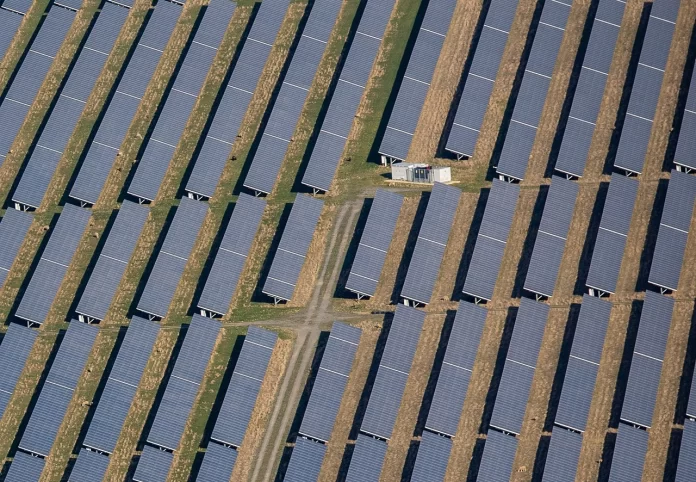Due to the nature of the energy transformation, the acceptance of change is an essential element for the success of this revolution. The number of jobs involved, the impact on the environment, and the social aspects related to the development of PV are increasingly scrutinized. Social acceptance is fueled by a positive perception of the changes.
In the case of PV, in contrast to other renewable sources, the initial perception of PV was positive. Most countries started by developing small-scale PV installations, mostly on roofs, and until 2006-07, the general perception of PV was positive, as its impact was marginal. PV represented only a small fraction of the energy produced and the question of acceptance was still largely irrelevant.
The first stakeholders to raise questions were grid operators looking at specific costs and the prospect of decreased revenues. Several US states – but also Germany, France and Belgium, among others – experienced questioning of, or in the worst case direct opposition to, distributed PV development. The opposition of conventional electricity producers added rapidly to the equation. In many European countries, incumbent utilities lobbied substantially to reduce the deployment of PV, very often through negative campaigns that left traces in public opinion.
The first major drawback came from the massive market take-off in Spain in 2007-08, when the high popularity of the local feed-in tariff caused PV to develop so fast that the authorities stopped the tariff, in fear of economic and budget consequences for the country. In the countries that experienced a major market development followed by a rapid halt – such as Spain, France, Belgium, Czech Republic, Greece, Bulgaria and Romania, to mention a few (the EU was the epicenter of PV development until 2011-12) – the positive image of PV soon became polluted by the perception of extravagant profits, dramatic impacts on electricity prices, or quality issues. The opposition imposed drastic cuts to PV plants, after having largely swayed public opinion to the view that PV developers were abusing taxpayers’ money. PV development was severely curtailed in these countries during the decade prior to 2020, with social acceptance at dramatically low levels.
Over the years, the PV development paradigm has changed along with the perception of PV electricity. About 945.7 GW of PV power plants were producing electricity throughout the world at the end of the 2021, with around 70% installed during the last five years. An increasing number of markets have started contributing to global PV installations, and 2021 closed with a record number of new countries installing significant numbers of PV all around the world.
The rapid decline in PV prices over the past few years, despite the conjectural recent price increase, has enabled PV systems to achieve competitive prices in several countries. The possibility of developing PV systems with limited or no financial incentives is now an observable reality.
PV is now a major contributor in all the scenarios and perspectives for energy production at national and international levels. In a 2020 survey by IFOP, 84% of French people said they felt that PV was a clean, environmentally friendly energy source. With this broader integration, if electricity prices should remain at the high level experienced in 2022 in several places around the world in 2022, especially in Europe, the question of competitiveness and social acceptance would be completely redefined.
The strongest opposition is now generally related to utility-scale PV plants and land consumption. Environmental groups question or oppose PV development on the basis of risks to biodiversity and the artificialization of land. The question of aesthetics is increasingly asked, especially in areas with a recreational value. In recent years, bans have been seen in Europe against PV on agricultural land, leaving few options for ground-mounted PV outside of former industrial zones. The shift toward agrivoltaics that we see now is an attempt to solve the competition for land with the dual use of energy and food production, but the opposition remains active.
Finally, the growth of PV is bringing PV into the political arena. General social acceptance has rebounded to a high level, but the economic equation of PV threatens the revenues of several stakeholders, which respond by campaigning heavily against PV development. The limited industrial job creation outside of Asia did not support accelerated PV development. In multiple countries (Turkey, Morocco, India), policies put a hold on PV development until it was coupled with local value creation. In France, indirect local content requirements have been introduced in tenders. Higher acceptance levels could be achieved by demonstrating the added value of PV in terms of job creation, revenue generation, economic and activity development, which could positively influence regions with industrial decline. The recent levels of support for the PV industry seen in Europe, India and the United States demonstrate this trend.
Community acceptance is related to the acceptance by local stakeholders. It includes concerns over distributional justice (the fair sharing of costs and benefits) and trust. Higher acceptance levels could be achieved by transferring value, part of the decision process or at least discussions to the citizens and local stakeholders at large. In general, the target is to overcome ignorance and misconception (for example, about the land that is actually needed to meet the targets). In Spain, some distributed PV can participate in tenders if they respect certain conditions of local partnerships and consumption centres proximity. In France, self-consumption is gaining momentum these two last years, indeed consumers are becoming prosumers which improves solar’s image. Similarly, the trend of energy communities and the Community Solar initiative in the United States enable the fight against poverty and energy vulnerability.
Although challenges related to the acceptance of PV are directly influenced by the political, economic, geographical, social context in which PV installations are being deployed, they are fairly similar across different regions and countries. This calls for a higher collaboration between countries on this topic based on the sharing of experience and exchange of good practices. The challenge of social acceptance about finding policies to harness the following positive aspects of the energy transition:
- The energy sector is responsible for a major part of the global CO2 emissions, with energy-related emissions evaluated at 33 Gt CO2eq in 2021. Increasing the PV share in the grid mix can significantly reduce the emissions from power generation.
- The PV sector employed an estimated 4.3 million people globally at the end of 2021. An estimated 1.2 million were employed in the upstream part while 3.1 million were active in the downstream part. The upstream part generates around 5 FTE per MW produced while the downstream part generates around 15 FTE per MW installed. The PV sector employs around one third of the total renewable energy workforce.
- Numerous studies in various countries have shown that PV reduces wholesale market prices for electricity at the time of production. Much remains to be done in carefully explaining how PV can also reduce the energy cost for end-consumers, including those without PV plants, thus countering the false statements that have reduced the confidence of the population in the energy transformation.





